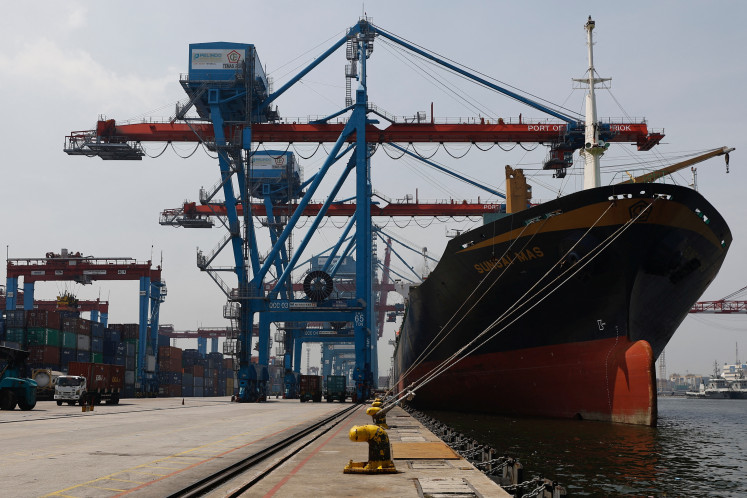Digital TV era dawns, set to indulge viewers
Say hello to digital television broadcasting, and bid farewell to the aging analog system
Change text size
Gift Premium Articles
to Anyone

Say hello to digital television broadcasting, and bid farewell to the aging analog system.
The government unveiled a plan to gradually migrate it's TV broadcasting system from analog to digital, which means consumers will have to purchase digital TV sets or converters to be able to watch their favorite shows.
"This will be the next big revolution in our TV broadcasting, after the conversion from black and white TV sets to color sets decades ago," Communications and Information Minister Mohammad Nuh said recently.
The ambitious plan kicked off with a nine-month trial project, before the government finally pulls the plug on the analog system by 2018 at the latest.
"Based on experiences in other countries, such as the U.S., it normally takes 10 years for the conversion. But we could accelerate it to seven to eight years, so we can fully adopt the digital system before 2018," Nuh said.
The decision to turn to the digital system, he added, followed research conducted by his ministry two years ago, which concluded the new system would bring many benefits, including higher efficiency, a wider frequency range and high quality sound and images.
And because of the use of data compression, digital waveforms take up less bandwidth than analog ones.
"This will create a wider frequency range, allowing broadcasters to provide more programs for viewers," Nuh said.
He said an 8-MHz digital channel could be used for six programs.
"With more space available, the government will demand TV stations allocate a certain percentage of their airtime for educational programs during commercial hours," he said.
Nuh also said consumers would benefit from the digital system because it "offers high quality of sound and images due to the absence of 'ghosts' and noise".
In terms of efficiency, he said, the system allowed broadcasters to share infrastructure, such as transmission towers, which contributed heavily to their operational spending. This, he added, would cut maintenance costs, energy and land usage.
"Moreover, audiences in a certain area will receive the same quality of broadcast services," Nuh said.
The digital system ruling, however, will require consumers to have either a TV set with a built-in digital tuner, or a compatible device known as a set-top-box (STB).
"Most TV sets manufactured after 2004 are already digital-compliant," Nuh said, adding an STB was needed for a non-digital TV.
But the STB is more than just a converter. It is equipped with an early warning system, which will alert people whenever a disaster occurs.
Nuh also said the STB would serve as an alternative rating system to that carried out by ACNielsen.
"The STB can record the number of viewers watching a certain program or TV station," he said.
Freddy Tulung, the ministry's administrator at the directorate general of communication facilities and information dissemination, said STB units would retail for between Rp 200,000 and Rp 300,000.
"But the price might go down when mass production of STBs begins," he said, adding the government was encouraging the local STB industry on this issue.
The Association of Private TV Stations (ATVSI) responded positively to the plan, but said there were some issues that needed further discussion.
"There are still many issues that remain unclear. For instance, the government's exact timeline for the plan," said ATVSI chairwoman Uni Z. Lubis.
The 10-member organization is seeking a unanimous stance regarding digital TV broadcasting, she added.
i-box
Road map to digital broadcasting
Aug. 13, 2008
Soft launch of a nine-month trial project in Greater Jakarta. The government is preparing up to 800 set-up-box (STB) units for the trial. The result of the trial will determine the right business model for TV stations and will be used by the government in drafting regulations.
2008-2012
The government stops issuing permits for analog TV stations and starts developing infrastructure for the digital system, as well as carrying out extensive campaigns for digital broadcasts.
2012-2017
The government gradually switches off analog TV broadcasts.
2018
The digital broadcasting regulation takes effect.
Sources: Communications and Information Ministry









